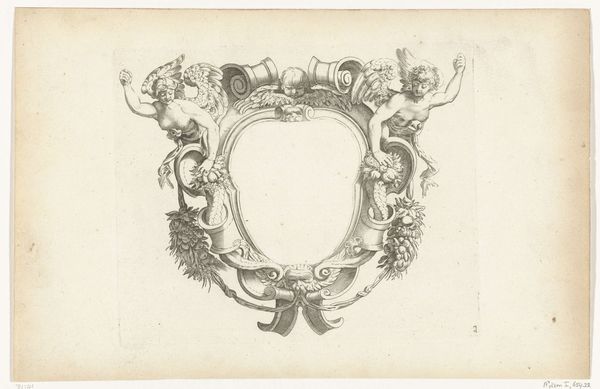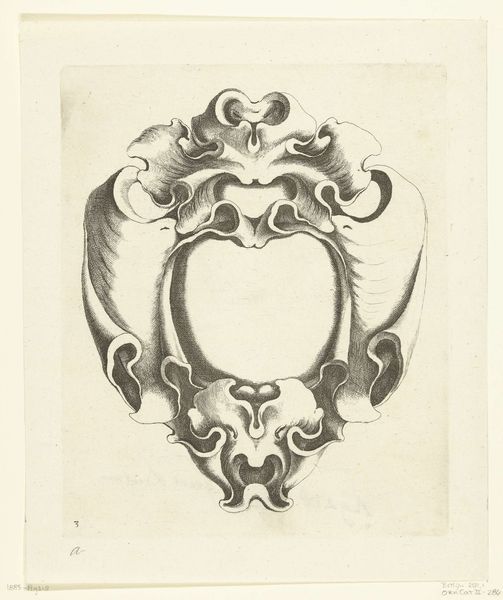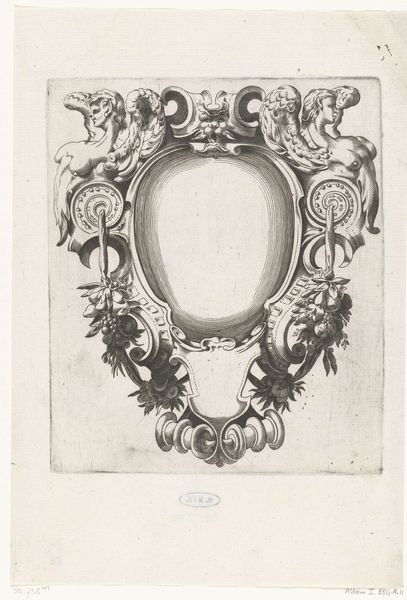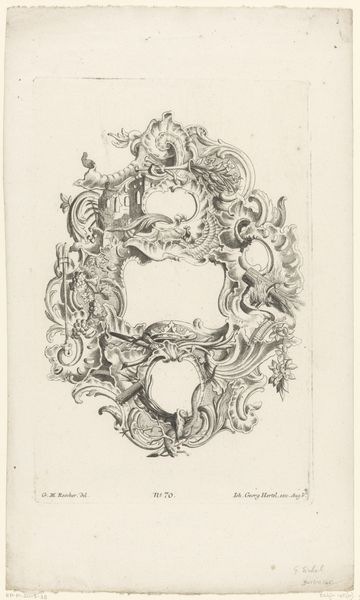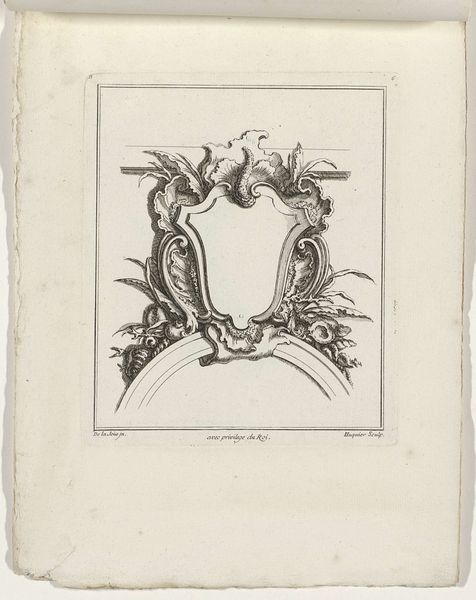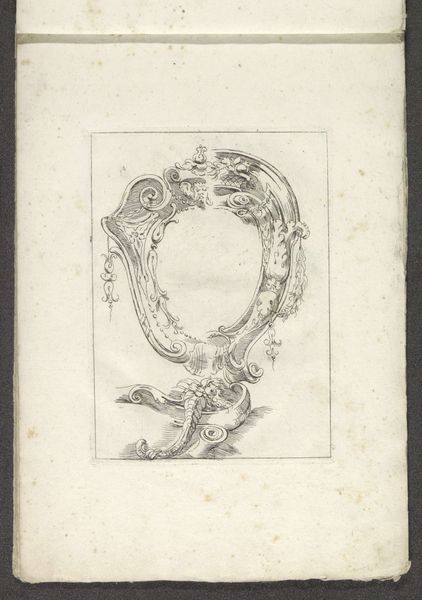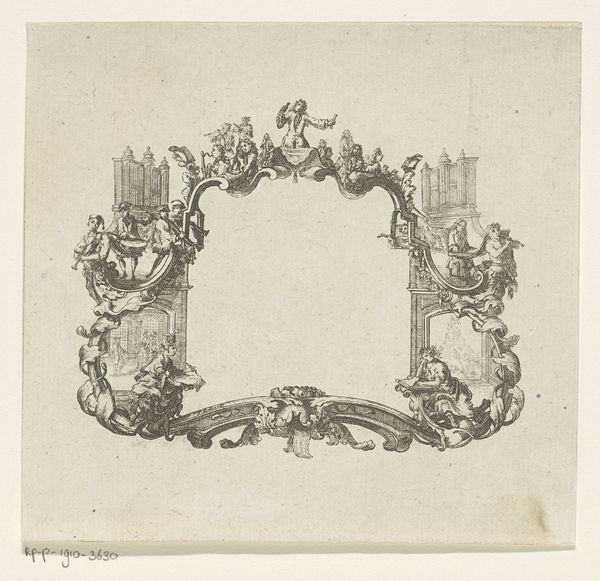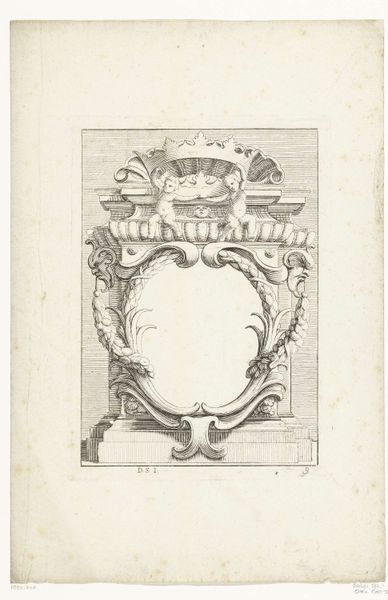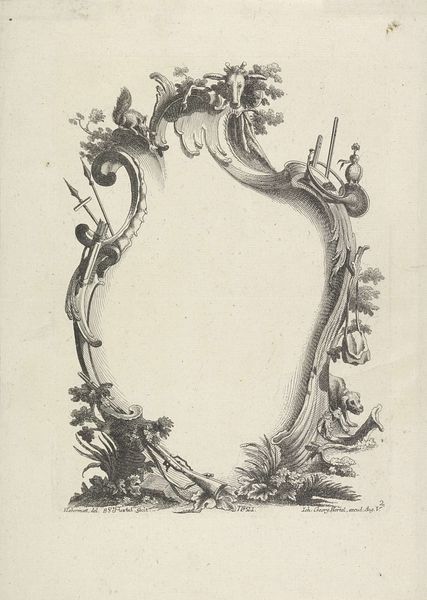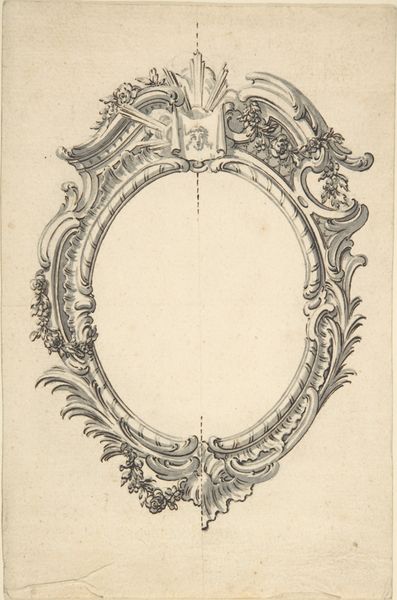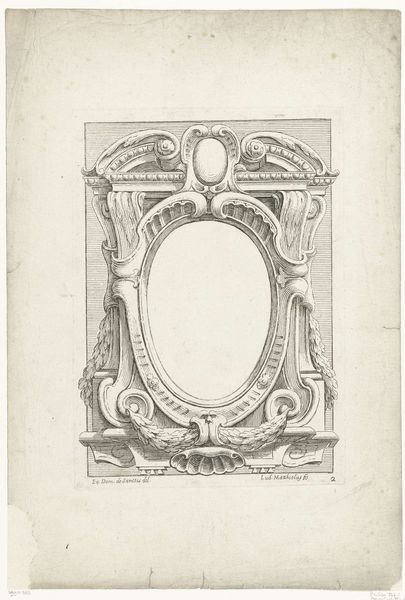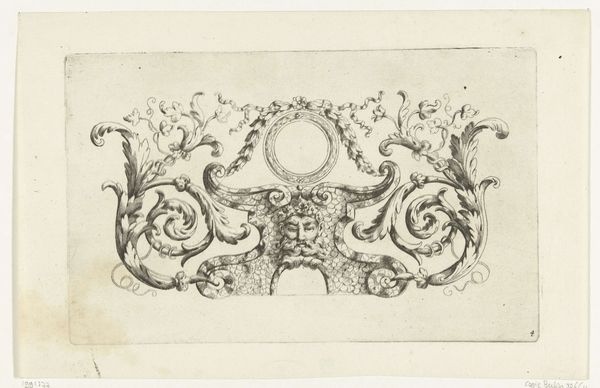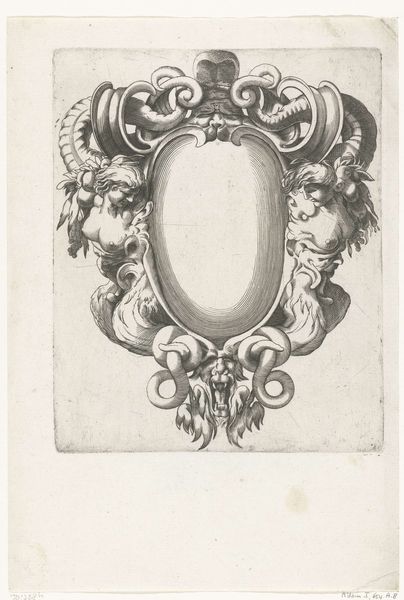
drawing, print, etching
#
drawing
#
baroque
# print
#
etching
#
form
#
line
Dimensions: height 104 mm, width 96 mm
Copyright: Rijks Museum: Open Domain
Editor: This etching, "Ornamenteel cartouche met Mercurius," is from between 1683 and 1783. It's an anonymous work, a drawing and print currently held at the Rijksmuseum. The cartouche itself is incredibly ornate, almost excessively so. How do you read this piece? Curator: This work speaks volumes about the function of art within systems of power. A cartouche, ostensibly designed to frame text or an image, becomes an exercise in opulent display. Consider how the figure of Mercury, a symbol of commerce and communication, is subsumed within the swirling Baroque ornamentation. Doesn’t this visual hierarchy underscore the way institutions, whether mercantile or aristocratic, instrumentalize even supposedly ‘free’ concepts for their own aggrandizement? What power dynamics do you think might be at play here? Editor: I hadn't considered that Mercury almost seems trapped by the frame. So, this isn't just decoration; it's a commentary on the constraints placed on ideas, maybe even people, by powerful institutions? Curator: Precisely! The visual language of Baroque art often served to reinforce existing social hierarchies. By placing Mercury, the embodiment of dynamism and exchange, within this rigid structure, the artist subtly critiques the ways in which power seeks to control and contain even the most fluid aspects of human activity. Where might we find similarly subversive messaging in other period artwork? Editor: This completely shifts my perspective. I see how the "frame" itself becomes part of the message, not just a border. Curator: Exactly! It compels us to question who benefits from this display of wealth and power and what narratives are being consciously or unconsciously promoted. Editor: I'll never look at an ornate frame the same way again. Thanks, this was fascinating!
Comments
No comments
Be the first to comment and join the conversation on the ultimate creative platform.
